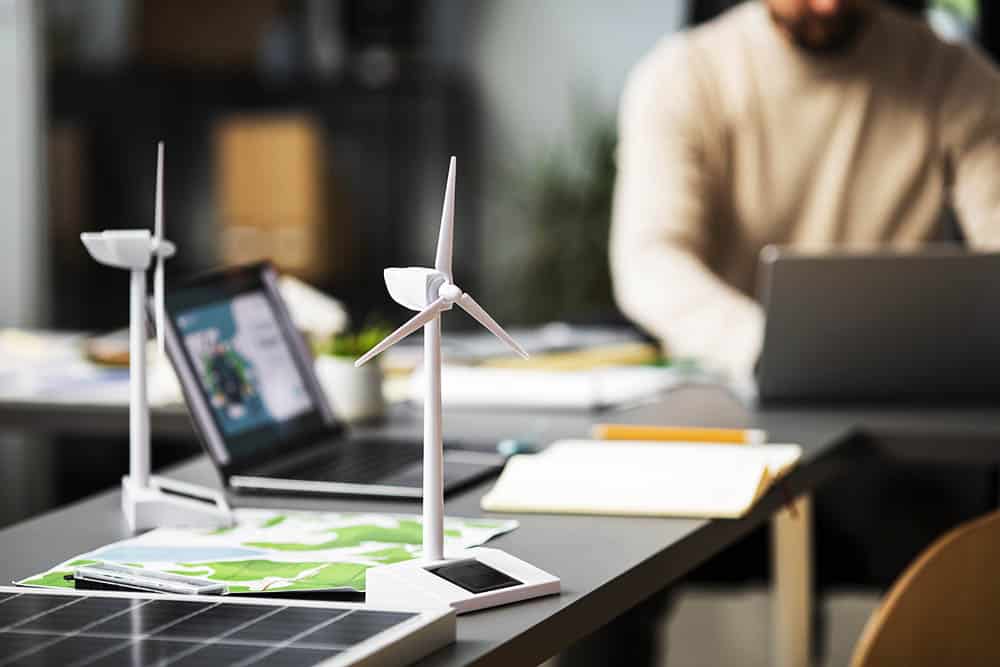Every day, we hear about the devastating effects climate change is having on our planet. It is time for the people of the world to take action, to embrace a new way of life, one which promotes a sustainable future for generations to come.
The path to a sustainable future is paved with small and large steps, but the most important is embracing a circular economy, as it offers great benefits to both the environment and the economy. In this article, we will take a closer look at what the circular economy is, the reasons why we should embrace it, and how we can all play a part in creating a sustainable future.
What is the Circular Economy?
The circular economy is a concept that is quickly gaining popularity across the globe, as people begin to embrace the benefits it has to offer. At its heart, the circular economy is a regenerative system that is designed to keep resources in use for as long as possible, extracting maximum value from them while in use, and then recovering and regenerating products at the end of their lives.
Simply put, the circular economy is based on the idea of reusing, recycling and reducing waste. This concept is the opposite of the traditional linear economy model, which is based on take, use, dispose.
The Benefits of a Circular Economy
The circular economy offers many benefits to the environment and the economy. Here are some of the most important advantages:
Reduction in Waste: A circular economy reduces waste by using products for longer periods of time, eliminating the need for disposal.
Lower Environmental Impact: The circular economy reduces the strain on the environment by reducing greenhouse gas emissions and the depletion of natural resources.
Lower Costs: A circular economy reduces costs by increasing efficiency and by using resources in a way that minimises waste.
New Business Opportunities: The circular economy creates new business opportunities by encouraging the development of new technologies and services.
How We Can Embrace the Circular Economy?
One of the simplest ways to embrace the circular economy is to change our behaviours, our norms and our attitudes. Here are a few tips to get you started:
Buy Second-hand Items: When purchasing things you need, such as clothing, furniture or electrical appliances, consider buying second-hand items that are still in good condition.
Reduce, Reuse, Recycle: Make sure that you are reducing the amount of waste you produce, and reuse items whenever possible. Also make sure that you recycle as much as you can.
Borrow Instead of Buy: Consider borrowing items you need, such as tools or sports equipment, instead of buying them. This is not only cheaper, but you can get to know your neighbours as well!
Campaign for Change: Consider becoming an advocate for the circular economy in your community. Raise awareness, encourage sustainable practices, and work with local businesses and government to effect change.
How Businesses Can Embrace the Circular Economy?
Businesses are also playing a key role in embracing the circular economy. Here are just a few ways companies can integrate the principles of a circular economy into their business practices:
Design Products for Longer Lifespans: Create products that are made to last in order to reduce the amount of waste generated. This can include creating timeless designs, using materials with a long lifespan, or providing a repair service.
Move to Service-Based Business Models: Instead of selling products, businesses can shift to a service-based model. This allows the company to keep ownership of the product and keep it in use for as long as possible, reducing waste.
Collaborative Consumption: Companies can offer a platform for their customers to share products, such as car rentals, reducing the need for production of new goods.
Recycling and Reuse: Companies can shift focus to a circular economy by recycling materials and using them to make new products. This can include using recycled plastics, metal or paper.
What Role Governments Can Play to Promote a Circular Economy?
Governments are also playing an important role in promoting a circular economy. Here are a few ways that governments can help:
Implement Waste Reduction Policies: Governments can implement policies that reduce waste by promoting reuse, recycling, and composting. This can include implementing landfill taxes, mandatory waste separation and recycling targets.
Incentivize Sustainable Manufacturing: Governments can incentivize companies to manufacture products using sustainable materials and production techniques. This can be done through tax breaks, funding programs or subsidies.
Create a Legal Framework for a Circular Economy: Governments can create legal frameworks that promote a circular economy, such as laws that require companies to use recycled materials or implementing extended producer responsibility laws that hold companies accountable for the materials they produce.
Promote Education and Innovation: Governments can promote education and innovation around the principles of circular economy. This can include funding research and development of new technologies, supporting sustainable entrepreneurship or offering education programmes.
Conclusion
With the consequences of climate change becoming increasingly dire, we must all take action to embrace a circular economy. By reducing waste, reusing products, and embracing sustainable practices, we can reduce our impact on the environment and make a positive difference for generations to come. Companies also have a role to play, by developing sustainable business models and creating products that are built to last. Governments can promote a circular economy by implementing policies and creating a legal framework that encourages sustainable practices. Ultimately, the circular economy is a win-win situation for the environment and the economy, and it is up to all of us to make it happen.
